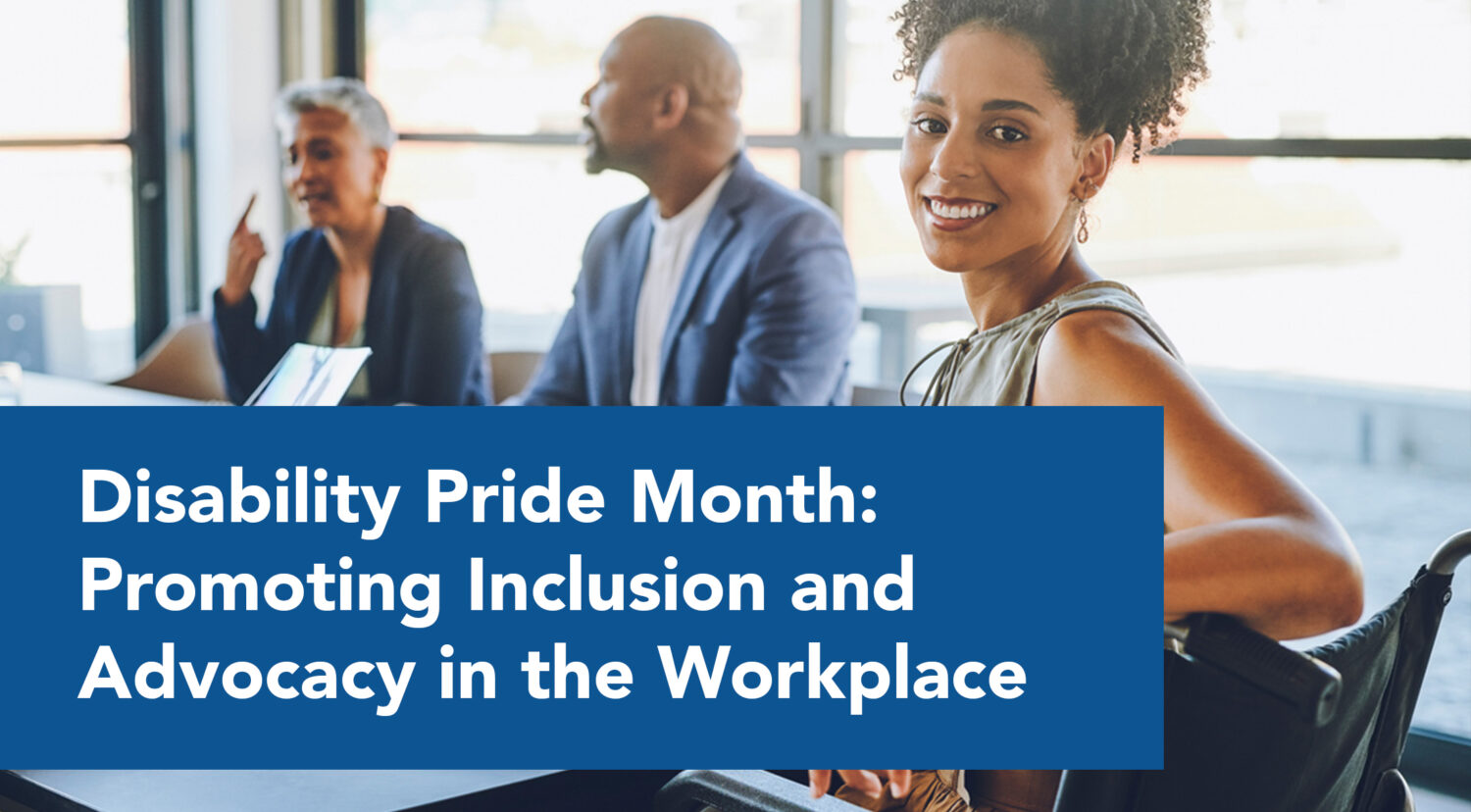

My fellow HR Professionals,
July is Disability Pride Month, a time to recognize and celebrate the accomplishments of people with disabilities. According to the US Census Bureau’s American Community Survey, in 2021 there were roughly 42.5 million “civilian non-institutionalized” disabled folk in this country. That’s roughly 13% of that same civilian non-institutionalized population. Other sources, such as the CDC, say that 27% of the US population was disabled, or 1 in 4 Americans, in 2023. Perhaps the former number is having a diagnosed disability while the latter is simply living with a disability. Whichever number or source we use, it’s a large number.
Fortunately/Unfortunately, the percentage of disabled people that are employed is 22.5% according to the U.S. Department of Labor, Bureau of Labor Statistics. Fortunate because that is an increase of 1.2%. Unfortunate because it’s still not a high number. However, to be fair, 50% of the disabled population is over 65 years old and not as likely to be employed or actively seeking employment.
As HR professionals, we play a vital role in ensuring our organizations not only comply with disability rights laws but also foster environments where everyone can thrive. Today we’ll explore the significance of Disability Pride Month, delve into the history of the disability rights movement, and discuss practical strategies for promoting inclusive hiring practices and advocacy within our workplaces.
Understanding Disability Pride Month and the Disability Rights Movement
Disability Pride Month, first celebrated in 1990, coincides with the signing of the Americans with Disabilities Act (ADA), a groundbreaking law that prohibits discrimination based on disability. The disability rights movement, gaining momentum in the 1960s and 1970s, has been instrumental in advocating for the rights of individuals with disabilities, ensuring access to public spaces, education, and employment opportunities.
A critical piece of legislation is Section 503 of the Rehabilitation Act of 1973, which mandates that federal contractors and subcontractors take affirmative action to employ and advance qualified individuals with disabilities. This law has significantly influenced inclusive hiring practices and increased the representation of individuals with disabilities in the workforce.
Promoting Inclusive Hiring Practices
Creating a diverse and dynamic workplace that may include wonderful workers with disabilities starts with inclusive hiring practices. Here are some strategies to ensure your hiring processes are inclusive:
- Inclusive Job Postings: Write job descriptions that emphasize your commitment to diversity and inclusion. Highlight the importance of diverse perspectives and clearly state that accommodations are available during the hiring process.
- Accessible Job Postings: Ensure that job descriptions are written in accessible language. Utilize platforms and tools that are accessible to individuals with disabilities.
- Diverse Recruiting Channels: Use a variety of recruiting platforms to reach a broader audience, including disability-focused job boards and organizations. Partner with local disability advocacy groups to connect with qualified candidates.
- Structured Interviews: Implement structured interview processes with standardized questions that focus on the candidate’s skills and experience. This helps minimize biases and ensures a fair evaluation of all candidates.
- Reasonable Accommodations: Proactively offer reasonable accommodations throughout the hiring process and employment. This could include providing assistive technology, flexible work schedules, or modified workspaces.
ADA Compliance Regulations and Beyond
Compliance with ADA regulations is not just a legal requirement but a moral responsibility. The ADA mandates that employers provide reasonable accommodations to qualified employees with disabilities and prohibits discrimination in all aspects of employment. Regularly review your policies and practices to ensure they align with ADA requirements and promote an inclusive workplace.
However, compliance alone is not enough. True inclusion requires a cultural shift that values diversity and advocates for the rights of individuals with disabilities. This means actively seeking feedback from employees with disabilities and making continuous improvements to foster an inclusive environment.
Disability Advocacy and Building an Inclusive Workplace
- Employee Resource Groups (ERGs): Establish ERGs for employees with disabilities. These groups can provide support, raise awareness, and advocate for necessary changes within the organization.
- Disability Awareness Training: Conduct regular training sessions to educate employees about disability rights, etiquette, and the importance of an inclusive workplace. This can help break down stereotypes and promote a culture of understanding and respect.
- Celebrate Achievements: Recognize and celebrate the achievements of employees with disabilities. Highlight their contributions through internal communications, events, and awards.
- Policy Development: Develop and implement policies that support disability inclusion, such as flexible work arrangements, accessible communication channels, and anti-discrimination measures. Ensure these policies are well-communicated and consistently applied.
Addressing Violations of Disability Rights
Despite the progress made, violations of disability rights still occur in the workplace. It’s crucial to have robust mechanisms in place for reporting and addressing such violations. Encourage a culture of openness where employees feel safe to report any instances of discrimination or harassment. Investigate complaints thoroughly and take appropriate actions to rectify any issues and prevent future occurrences.
Conclusion: Embracing Disability Pride Month
As we celebrate Disability Pride Month, let us reaffirm our commitment to creating workplaces that are inclusive, equitable, and supportive of all employees. By promoting inclusive hiring practices, advocating for disability rights, and ensuring ADA compliance, we can build environments where individuals with disabilities can thrive and contribute their unique talents and perspectives.
Together, we can honor the legacy of the disability rights movement and pave the way for a future where every employee, regardless of ability, feels valued and empowered.
Thank you for your dedication to fostering inclusive and equitable workplaces.
- Americans with Disabilities Act of 1990, as Amended. Accessed July 3, 2024.
- U.S. Department of Labor, Office of Federal Contract Compliance Programs. “Section 503 of the Rehabilitation Act of 1973.” Accessed July 3, 2024.
- “News Release: Persons With a Disability: Labor Force Characteristics — 2023.” Bureau of Labor Statistics, U.S. Department of Labor, 2024. February 22.
- “Disability Impacts All of Us.” U.S. Centers for Disease Control and Preventionn.d.
- “American Community Survey.” United States Census Bureaun.d.
HR Unlimited, Inc. specializes in helping federal contractors and employers effectively meet their AAP and EEO compliance obligations. Please contact us to discuss any of your questions, concerns, or needs in this area.





